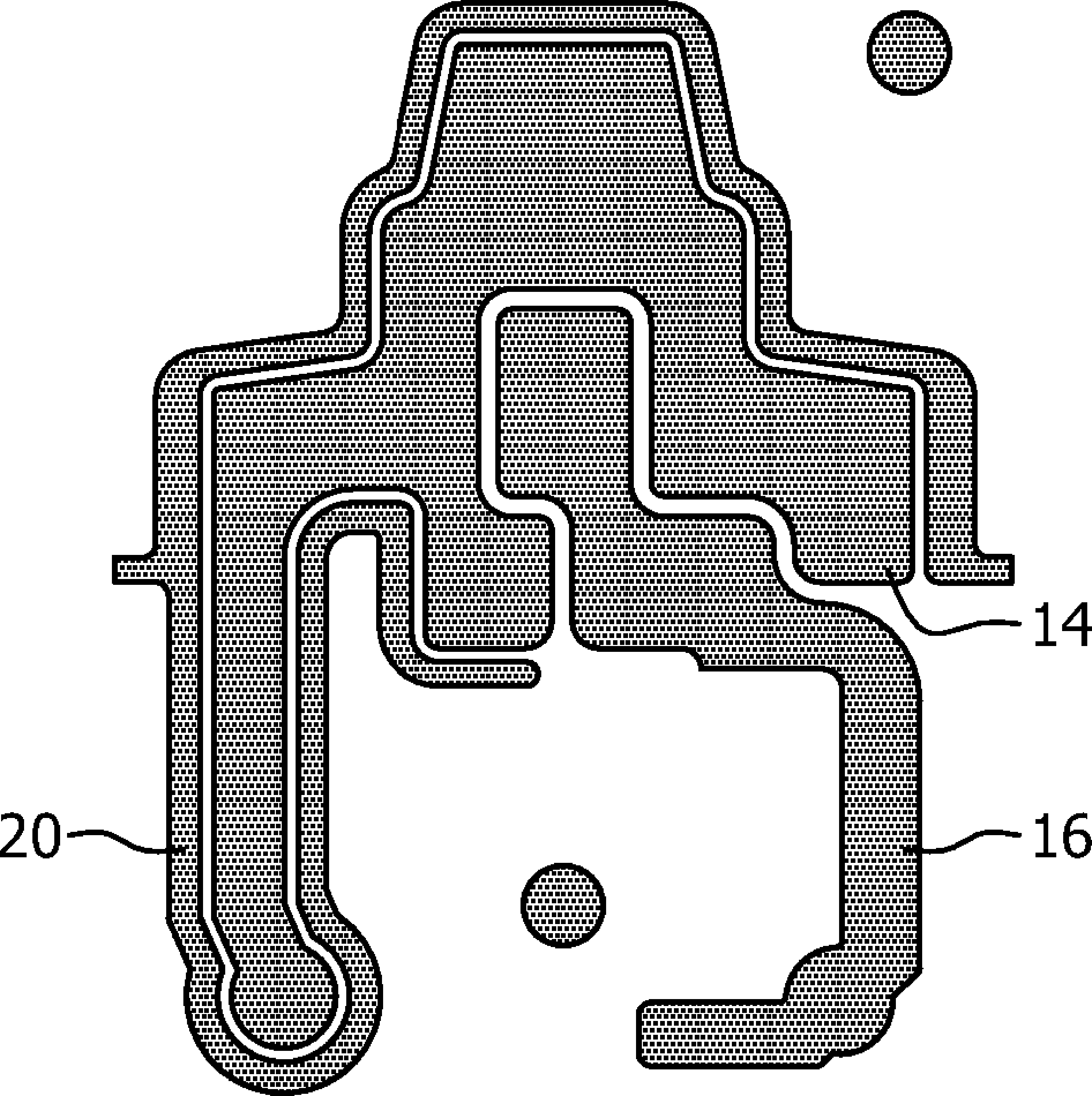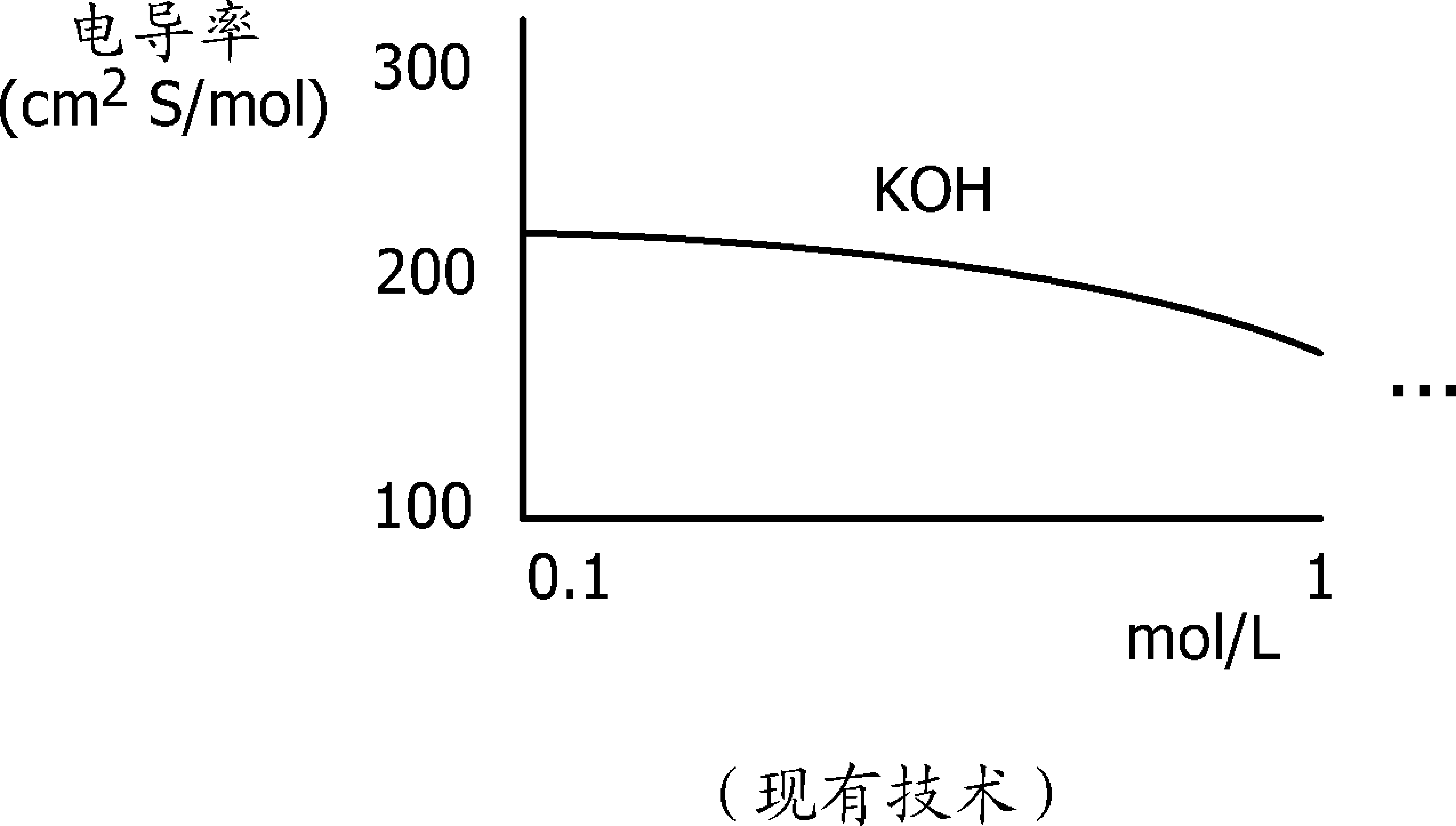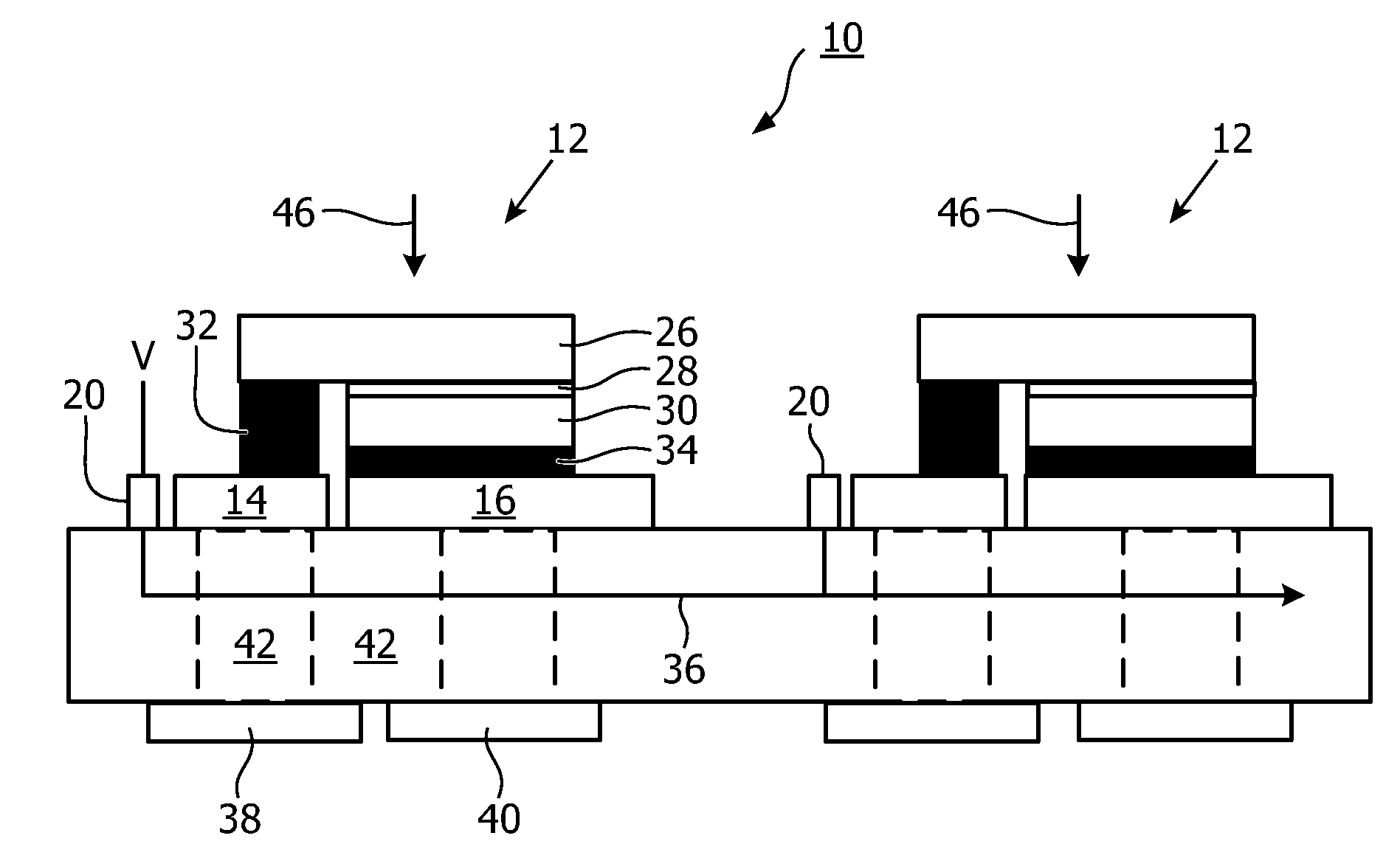Pec biasing technique for LEDs
A light-emitting diode, bias voltage technology, applied in circuits, electrical components, electrical solid devices, etc., can solve the problem that the N layer cannot be interconnected with metal interconnects.
- Summary
- Abstract
- Description
- Claims
- Application Information
AI Technical Summary
Problems solved by technology
Method used
Image
Examples
Embodiment Construction
[0027] FIG. 1 shows a substrate wafer 10 populated with an array of LED dies 12 . There may be hundreds of dies 12 bonded to wafer 10 . The substrate base material can be ceramic, silicon, insulating aluminum or other materials.
[0028] FIG. 2 is a close-up of four adjacent LED areas on wafer 10 showing N metal 14 and P metal 16 on the surface of wafer 10 . Metal 14 / 16 forms pads for bonding to the electrodes of LED die 12 . LED 12 and metal 14 / 16 can be any size. The metal 14 / 16 may be Ni / Au plated copper for bonding to the cathode and anode Ni / Au electrodes on the bottom surface of the LED die 12 . The LED electrodes can be bonded to the metal 14 / 16 by ultrasonic welding or other methods.
[0029] Metal 14 / 16 may be connected to the bottom pad of each substrate in wafer 10 by vias extending through wafer 10 . After singulation, the bottom pad can then be surface mounted on a printed circuit board.
[0030] Metal pattern 20 is formed very close to N-metal 14 (suc...
PUM
 Login to View More
Login to View More Abstract
Description
Claims
Application Information
 Login to View More
Login to View More - R&D
- Intellectual Property
- Life Sciences
- Materials
- Tech Scout
- Unparalleled Data Quality
- Higher Quality Content
- 60% Fewer Hallucinations
Browse by: Latest US Patents, China's latest patents, Technical Efficacy Thesaurus, Application Domain, Technology Topic, Popular Technical Reports.
© 2025 PatSnap. All rights reserved.Legal|Privacy policy|Modern Slavery Act Transparency Statement|Sitemap|About US| Contact US: help@patsnap.com



